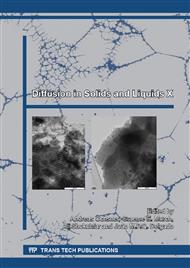p.272
p.278
p.285
p.291
p.297
p.305
p.311
p.317
p.323
Cellulase Production under Solid State Fermentation in Cashew Apple Bagasse by Trichoderma reesei LCB 48
Abstract:
Cellulases, among many enzymes, have been highlighted in several areas of expertise, such as food, textiles, pulp and paper and wastewater treatment of effluents and residues. There is also the challenge of producing biofuels, where currently cellulases have been widely applied in the production of cellulosic ethanol, where it is used during the stage of hydrolysis of lignocellulosic biomass for conversion of cellulose to glucose. Studies have been developed in order to produce this enzyme through a process of solid state fermentation from lignocellulosic agroindustrial wastes, thus reducing the cost of enzyme production, and adding value to the residue. The aim of this work was to produce cellulases from the stalk of the cashew bagasse using Trichoderma reesei LCB 48. The study of the cellulase production was performed using 22 factorial design with central point in quadruplicate. The washed stalk of the cashew bagasse inoculated with T. reesei was evaluated for the production of cellulases with initial moisture contents of 45, 55 and 65% and in the presence of inorganic nitrogen ((NH4)2SO4) at concentrations 0.5, 0.75 and 1%. The fermentation was developed over 238 hours, and during this period the parameters analyzed were pH, moisture, AR and enzyme activity expressed in CMCase. Peak production of cellulase enzyme expressed in CMCase was achieved with 238 hours which value was 0.71 U/g (0.095 U/mL), under the conditions of 45% initial moisture content and 1% of nitrogen source. This activity was obtained in only one stage of the biotechnological process, the solid state fermentation; the next ones are concentration and purification. The using of experimental design methodology allowed us to observe the initial substrate moisture is the determining variable in the production of enzymes CMCases, and the minimum moisture level (45%) showed the highest production values of CMCase.
Info:
Periodical:
Pages:
323-328
Citation:
Online since:
July 2015
Keywords:
Price:
Сopyright:
© 2015 Trans Tech Publications Ltd. All Rights Reserved
Share:
Citation:


